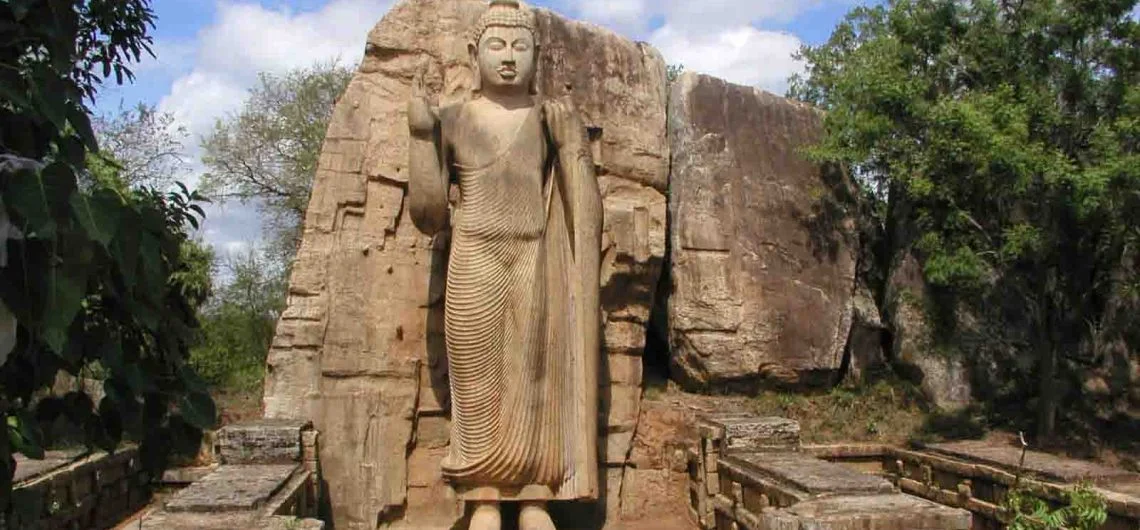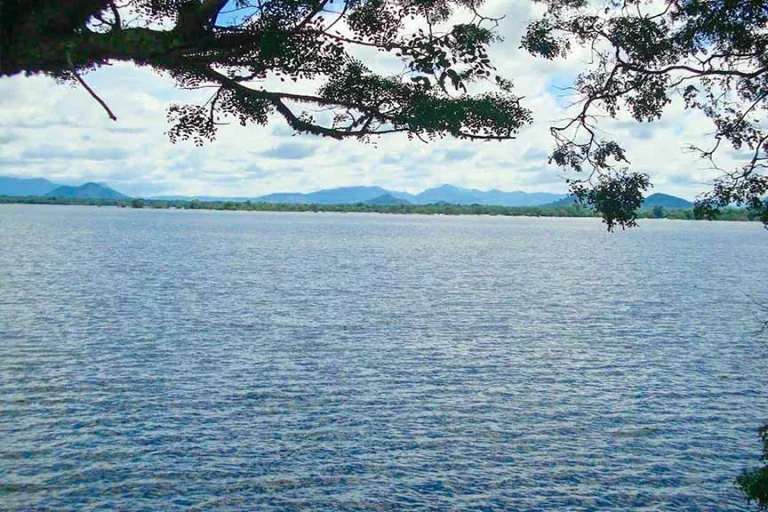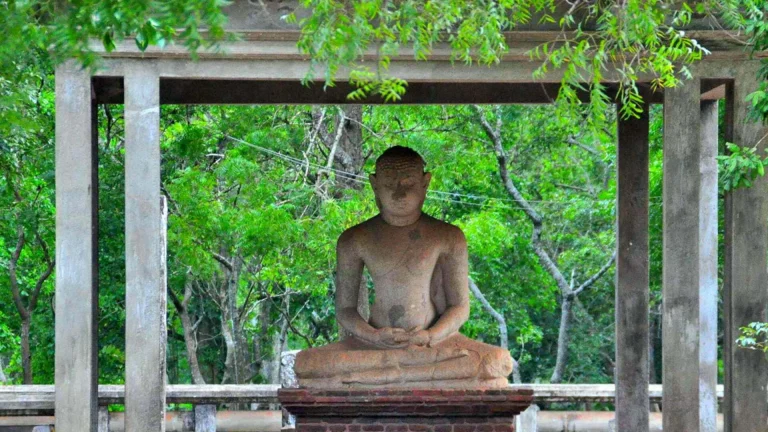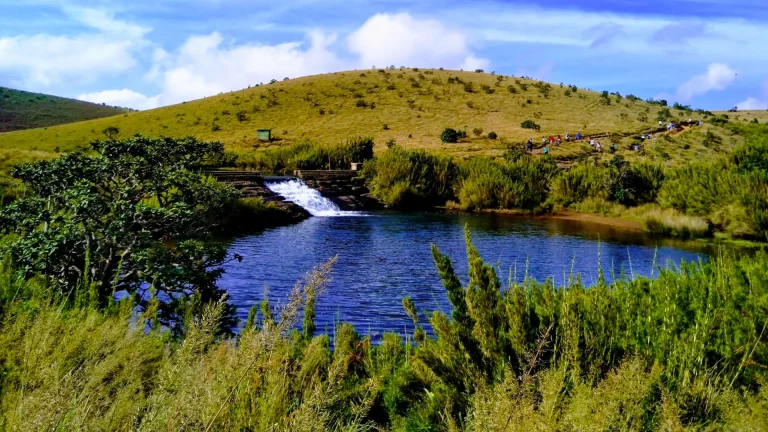All Provinces
Exploring the Ancient Marvel of the Avukana Buddha Statue in Sri Lanka
Nestled in the remote village of Avukana, near Kekirawa in the North Central Province of Sri Lanka, stands one of the island’s most awe-inspiring and well-preserved ancient sculptures – the Avukana Buddha statue. This monumental creation, carved out of solid granite rock, offers a captivating glimpse into Sri Lanka’s deep-rooted Buddhist heritage, intricate craftsmanship, and rich artistic traditions. A visit to this colossal statue is not just a journey through Sri Lanka’s past but also a spiritual pilgrimage that leaves travelers in awe of the ancient artisans’ skill and devotion.
The History and Origins
The Avukana Buddha statue is believed to date back to the 5th century during the reign of King Dhatusena, although its exact origins remain a topic of debate among historians. Some scholars suggest that the statue was a commission by the king himself, as a symbol of his devout Buddhist faith and to propagate the religion throughout his kingdom. The statue’s remarkable craftsmanship and detail reflect the artistic sophistication of the Anuradhapura Kingdom, a golden era in Sri Lankan history.
Interestingly, there is another school of thought that suggests the statue was created by a master sculptor in competition with another artist working on a similar Buddha statue at nearby Sasseruwa. Legend has it that the Avukana Buddha was completed first, making it the superior creation. Whether myth or fact, this story adds to the mystique surrounding the statue.

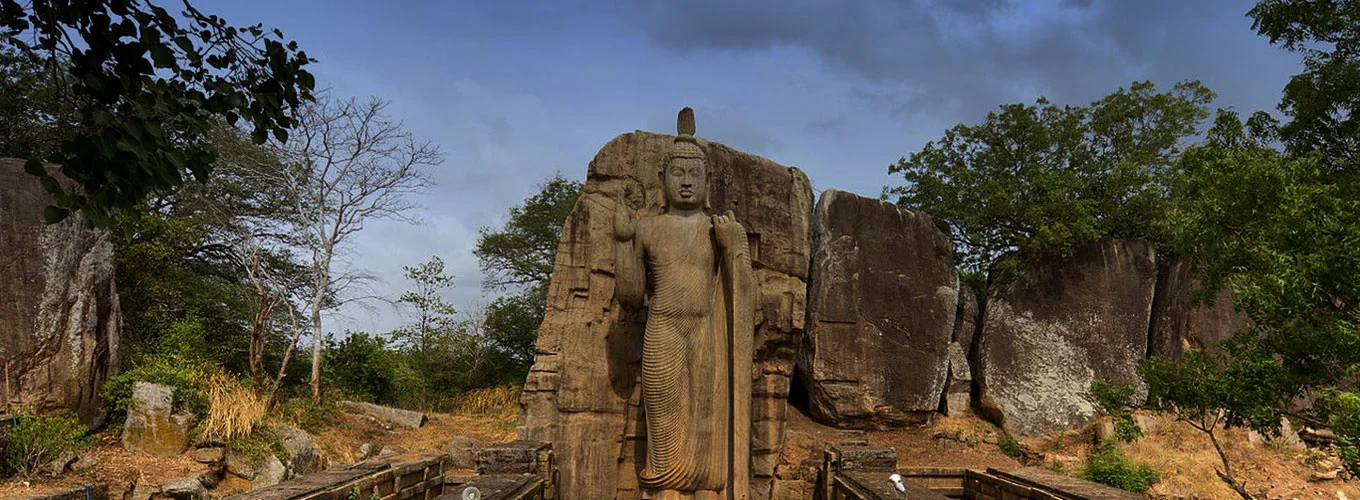
The Statue: A Monumental Masterpiece
Standing at an impressive 42 feet (12.8 meters) in height, the Avukana Buddha is a remarkable testament to ancient Sri Lankan rock carving techniques. The statue is sculpted directly from a single piece of granite and remains attached to the rock wall at its back, a design feature that not only adds structural stability but also highlights the fusion of the figure with its natural surroundings. The intricacy and precision of the carving are evident in the finely detailed robes that drape the Buddha, creating an almost life-like appearance.
The statue depicts the Buddha in the “Asisa Mudra” posture, with his right hand raised, palm facing outward, symbolizing the dispelling of fear and the granting of blessings. The serene expression on the Buddha’s face, with half-closed eyes, embodies calmness and spiritual enlightenment, drawing visitors into a peaceful and reflective state.
Another fascinating aspect of the statue is the attention to proportion and detail. The folds of the Buddha’s robe fall naturally, the anatomy of the figure is balanced, and even the subtle details of the facial features have been masterfully carved. This level of precision is remarkable, especially considering the rudimentary tools that would have been available at the time.
The Surrounding Landscape
The Avukana Buddha is set against the backdrop of a serene and quiet rural landscape, making the location as striking as the statue itself. The surrounding area is lush with greenery, and the stillness of the site enhances the spiritual aura. Unlike other more crowded tourist destinations in Sri Lanka, the remote location of the Avukana statue means that visitors can enjoy the site in relative tranquility, perfect for reflection and meditation.
There is a small Buddhist shrine nearby where locals come to offer prayers and pay homage to the statue. The atmosphere is solemn and peaceful, with the occasional sound of birds chirping, adding to the sense of reverence one feels when standing before the statue.
How to Get There
The Avukana Buddha statue is located approximately 30 kilometers from the town of Kekirawa and about 50 kilometers from Anuradhapura, making it a convenient day trip for travelers exploring Sri Lanka’s Cultural Triangle. The most common way to reach the site is by car or tuk-tuk, and the drive takes visitors through picturesque countryside, dotted with paddy fields, coconut plantations, and small villages.
For those traveling from Colombo, the journey takes about four to five hours by road. While public transportation is available, it may not be the most convenient option due to the remote location of the statue. Hiring a private vehicle or joining a guided tour is recommended for a comfortable and hassle-free visit.






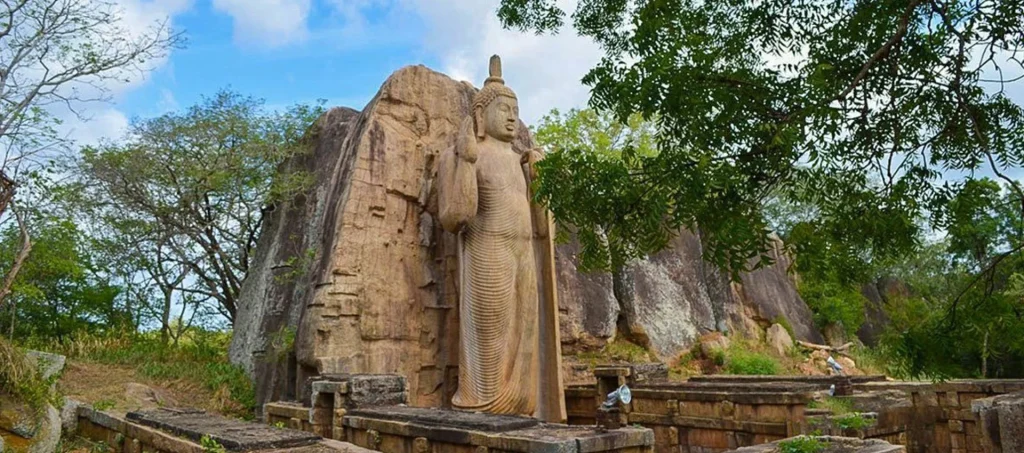
Best Time to Visit
The Avukana Buddha statue is open to visitors year-round, but the best time to visit is during the early morning or late afternoon when the sun casts a warm golden light on the statue, enhancing its grandeur. The cooler temperatures during these times also make for a more pleasant experience, as midday can get quite hot, especially in the dry zone where the statue is located.
It’s advisable to avoid visiting during the monsoon season (October to January) as the heavy rains can make the roads muddy and difficult to navigate.
Tips for Visitors
- Respect the sacredness: The Avukana Buddha statue is a revered religious site, so it’s important to dress modestly and behave respectfully. Covering shoulders and knees is recommended.
- Photography: While photography is allowed, avoid taking photos that might disturb those in prayer or meditation. Be mindful of the spiritual atmosphere.
- Local Guides: Hiring a local guide can enhance your experience, as they can provide deeper insights into the history, symbolism, and significance of the statue.
- Nearby Attractions: Consider combining your visit to Avukana with a trip to other nearby historical sites such as the Ritigala Forest Monastery or the ancient city of Anuradhapura, both of which offer fascinating glimpses into Sri Lanka’s Buddhist history.
Conclusion
The Avukana Buddha statue stands as a testament to the artistry, devotion, and spiritual depth of ancient Sri Lanka. For those interested in history, culture, or Buddhism, a visit to this iconic monument is a must. Its peaceful location, coupled with the intricate craftsmanship of the statue, creates an unforgettable experience that resonates with travelers long after they’ve left. Whether you’re seeking spiritual enrichment or simply marveling at the skill of ancient artisans, the Avukana Buddha statue is a destination that should not be missed on any trip to Sri Lanka.
See More Tourist Places Click Here

